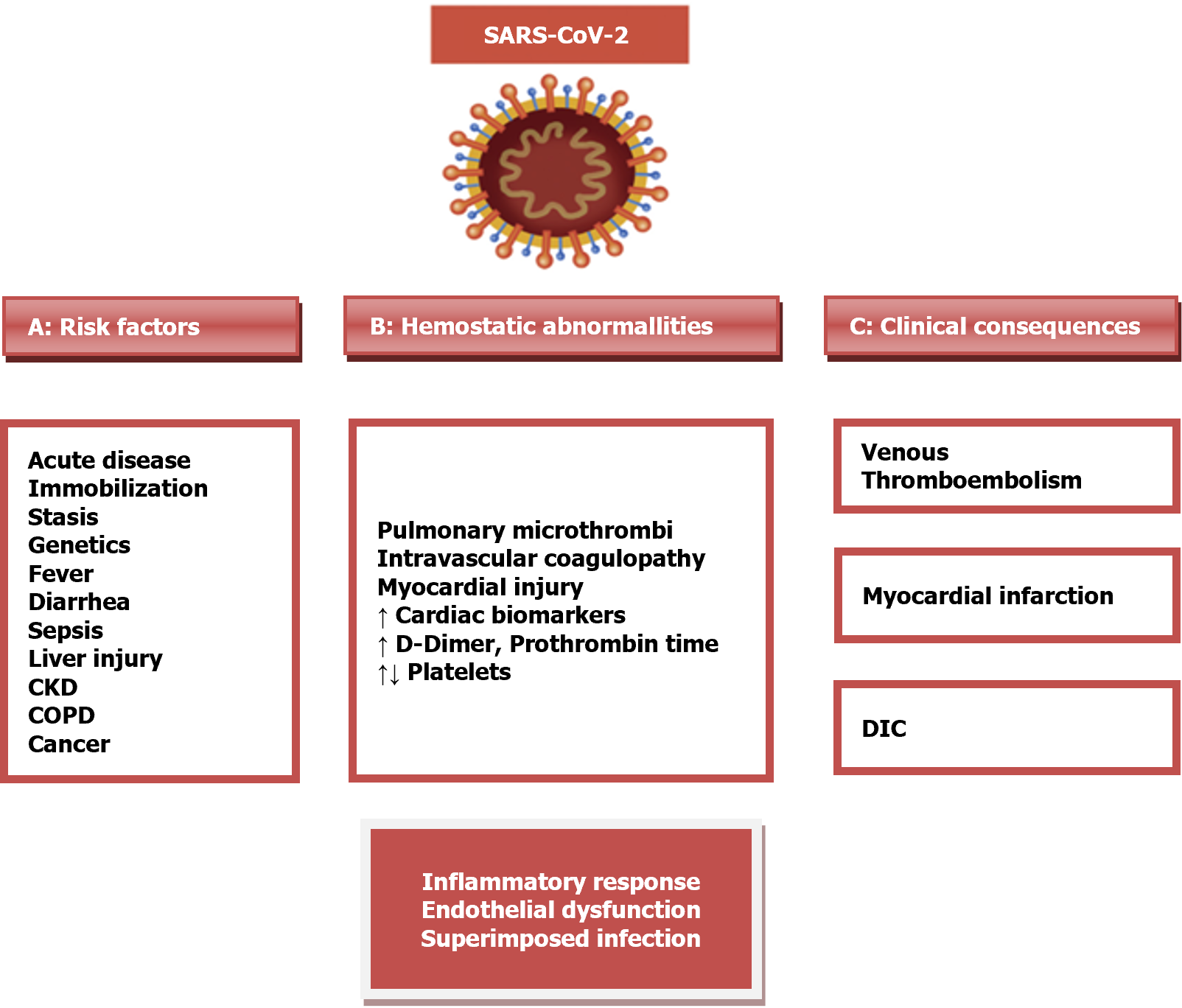Copyright
©The Author(s) 2024.
World J Clin Cases. Nov 26, 2024; 12(33): 6595-6603
Published online Nov 26, 2024. doi: 10.12998/wjcc.v12.i33.6595
Published online Nov 26, 2024. doi: 10.12998/wjcc.v12.i33.6595
Figure 1 Schematisation of the pathological and prothrombotic mechanisms and pathways of the severe acute respiratory syndrome coronavirus 2 infection.
A: Severe acute respiratory syndrome coronavirus 2 infection leads to endothelial and hemostatic activation with the release of inflammatory mediators, increase of Von Willebrand factor and tissue factor. Patients with severe infection has more remarkable inflammatory response, lymphopenia and thrombocytopenia. Liver injury, impaired coagulation and decreased antithrombin formation are observed; B: Coronavirus disease 2019 is known to trigger hemostatic irregularity and release of cardiac troponins into bloodstream; C: Disseminated intravascular coagulation is observed in cases of increased prothrombotic state, venous thromboembolism, myocardial infarction, hemostatic irregularity. CKD: Chronic kidney disease; COPD: Chronic obstructive pulmonary disease; DIC: Disseminated intravascular coagulation; SARS-CoV-2: Severe acute respiratory syndrome coronavirus 2.
Figure 2 Coagulopathy in coronavirus disease 2019 patients.
D-D: D-dimer; DIC: Disseminated intravascular coagulation; FIB: Fibrinogen; PLT: Platelet; PT: Prothrombin time; COVID-19: Coronavirus disease 2019.
- Citation: Karcioglu O, Akman C, Ozturk GA. Prothrombotic state and thrombotic events in COVID-19 pandemic period, including portal vein and splenic artery thromboses. World J Clin Cases 2024; 12(33): 6595-6603
- URL: https://www.wjgnet.com/2307-8960/full/v12/i33/6595.htm
- DOI: https://dx.doi.org/10.12998/wjcc.v12.i33.6595










